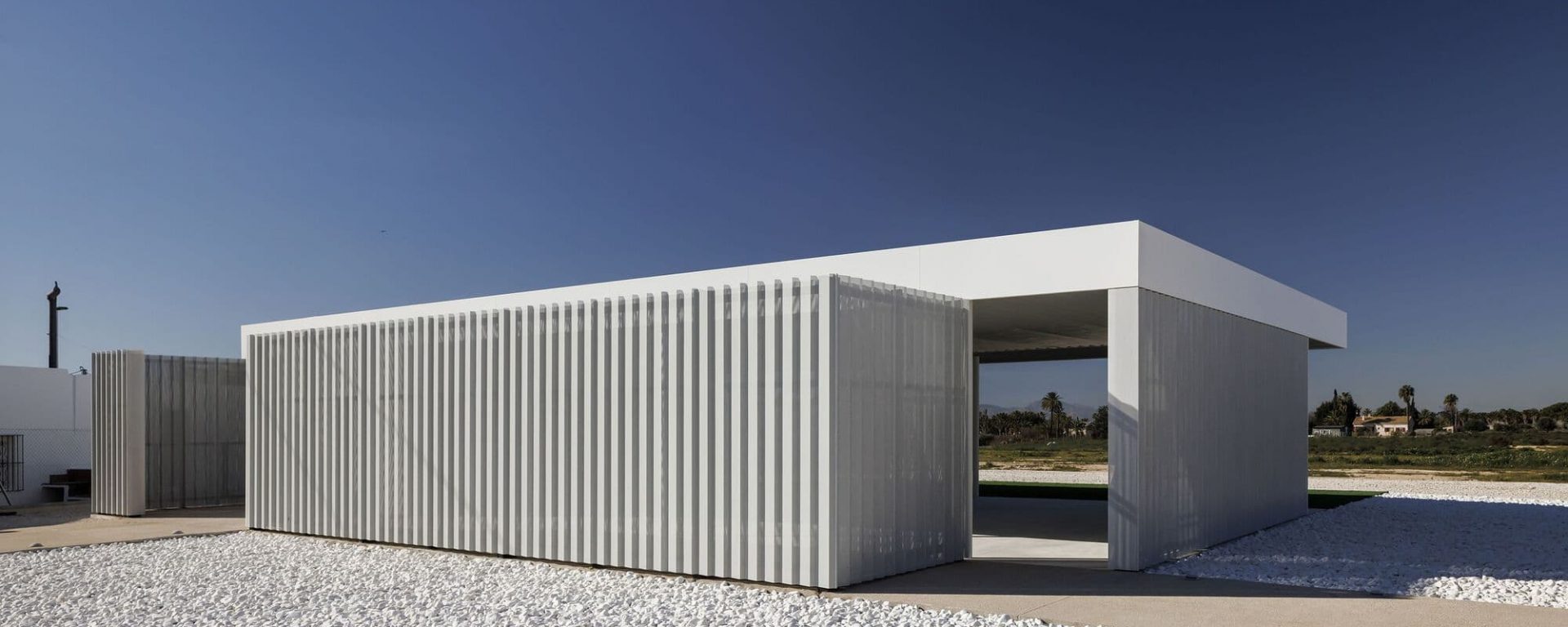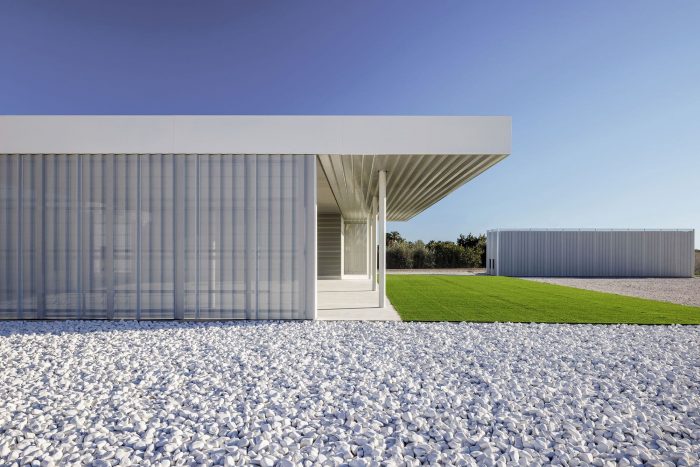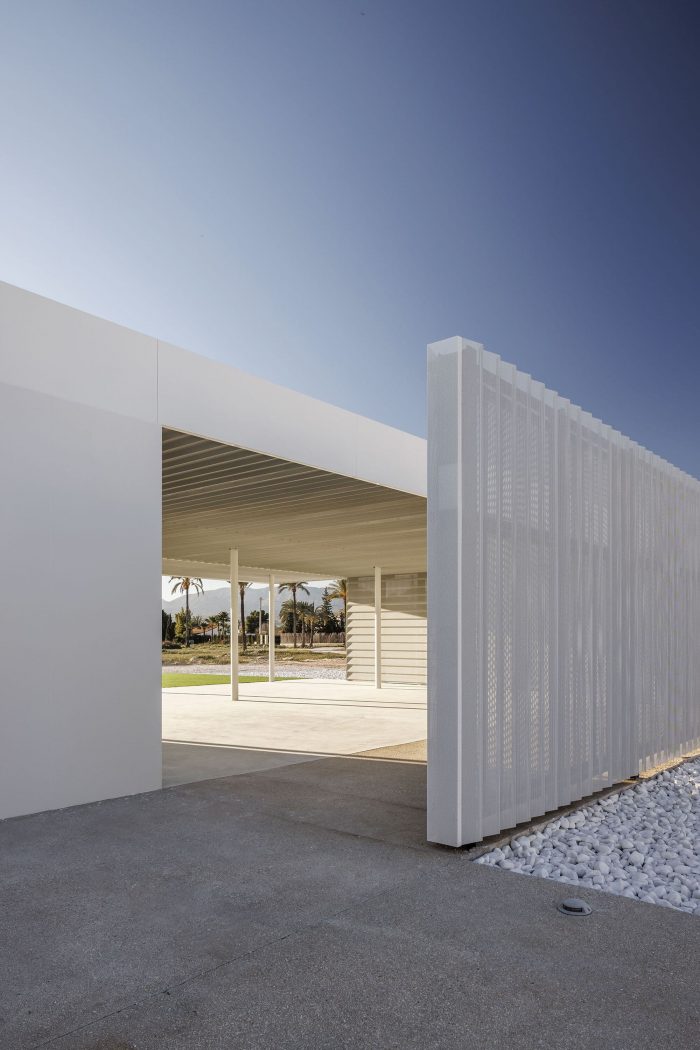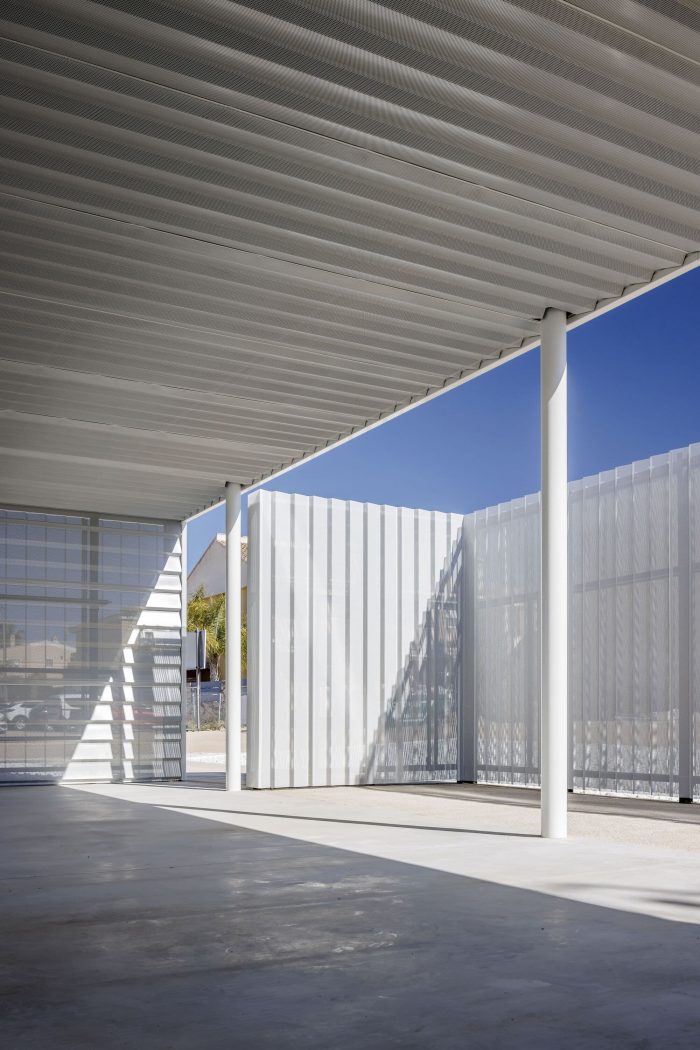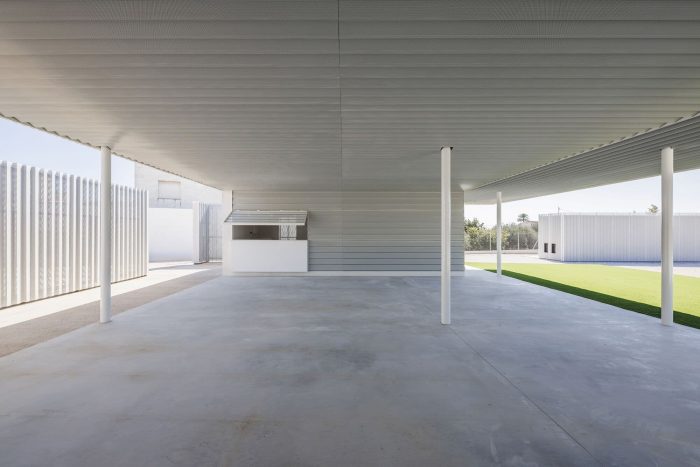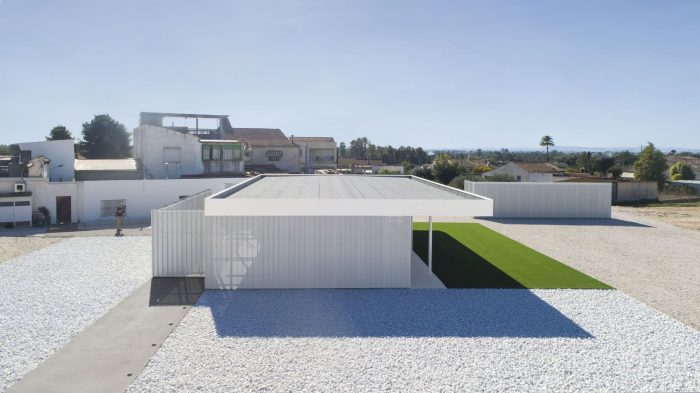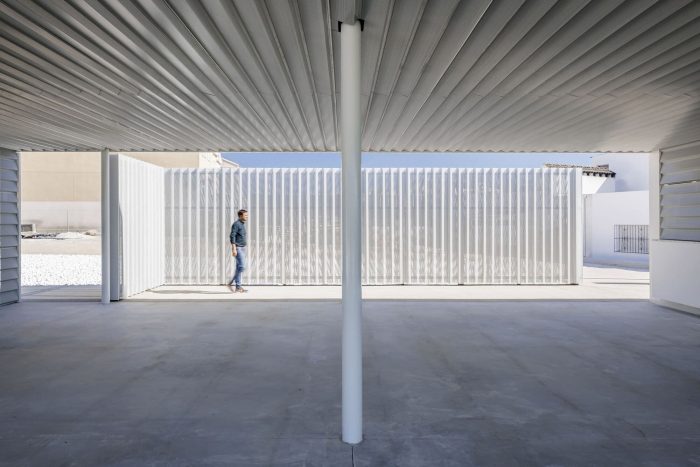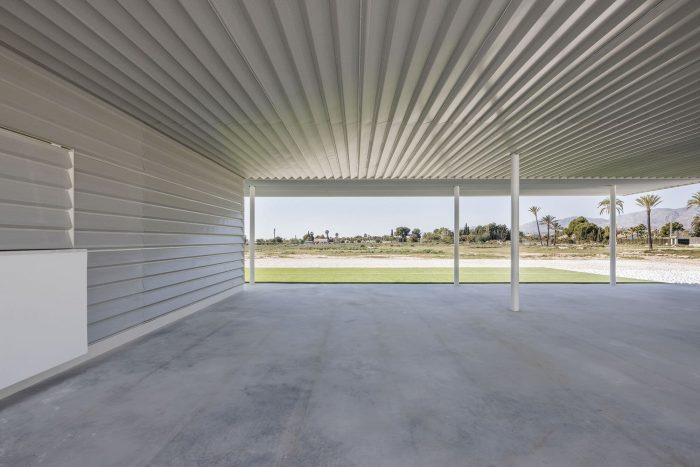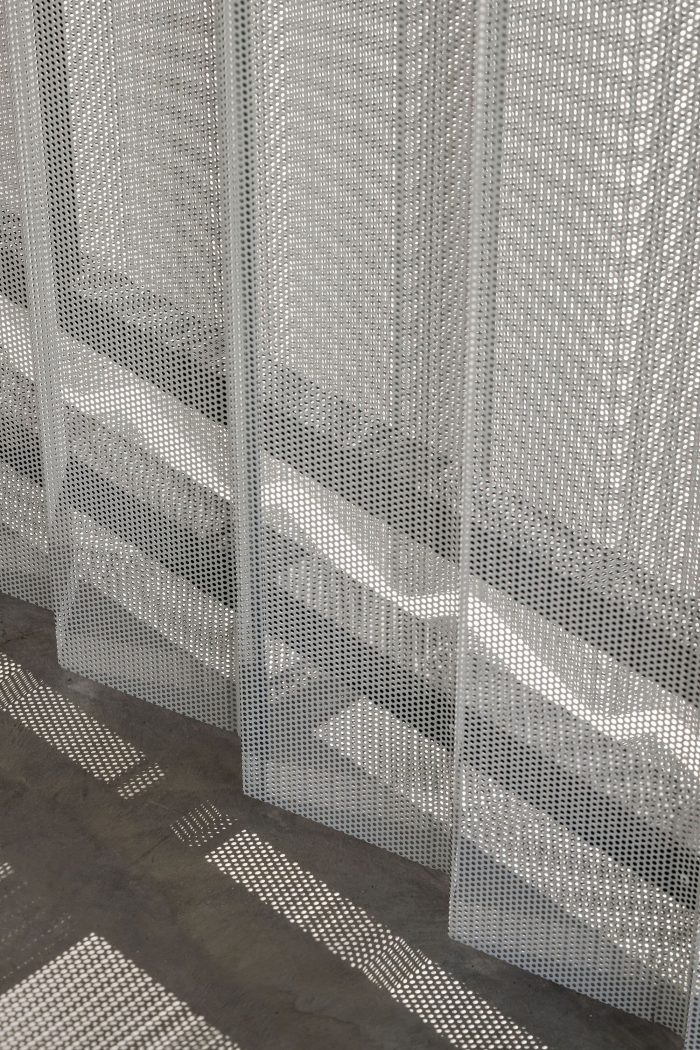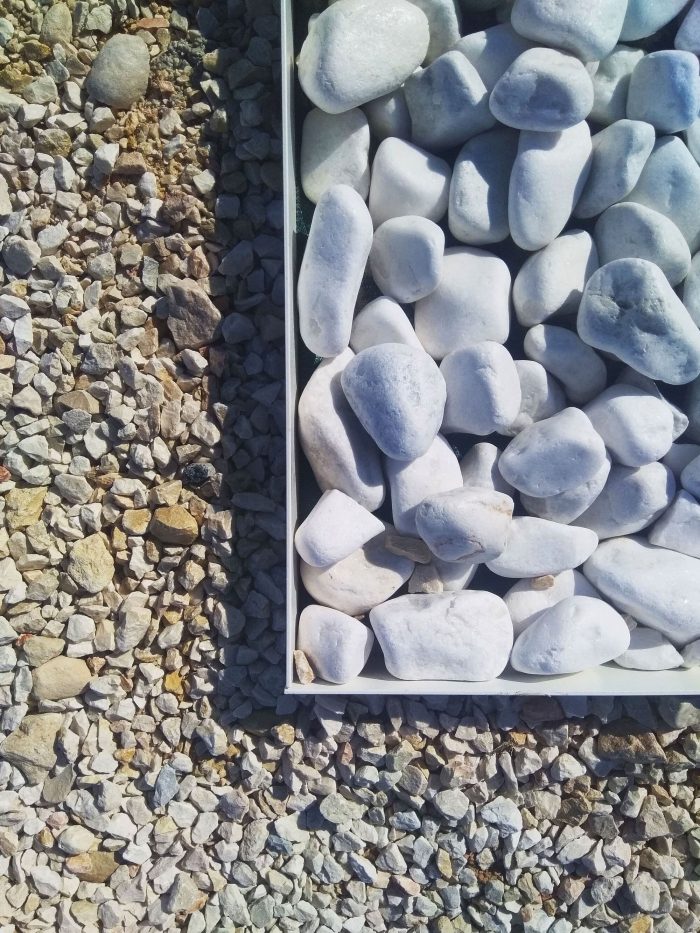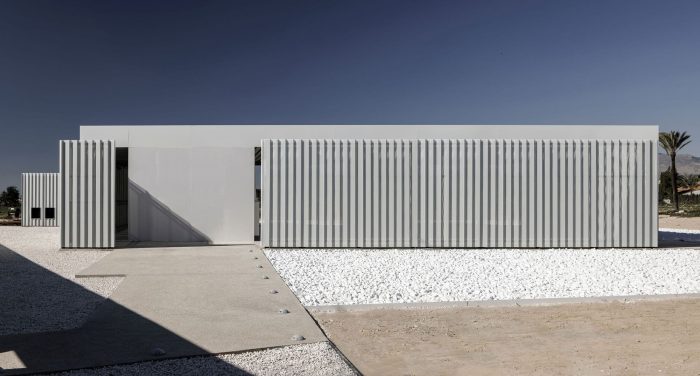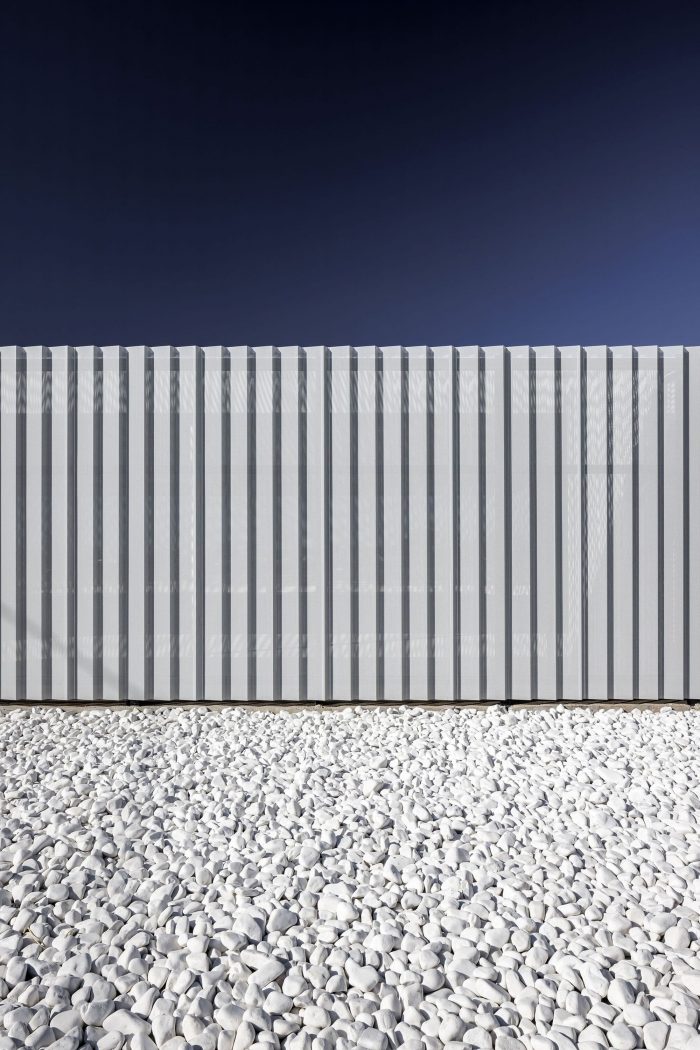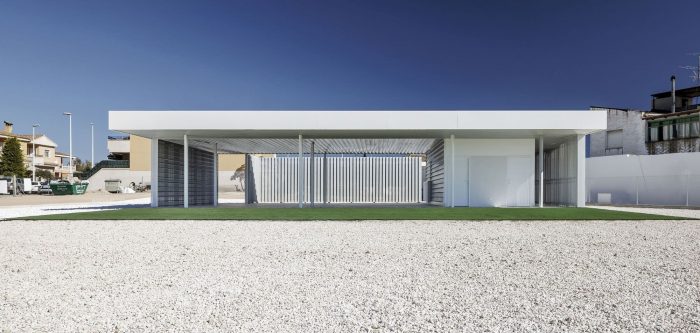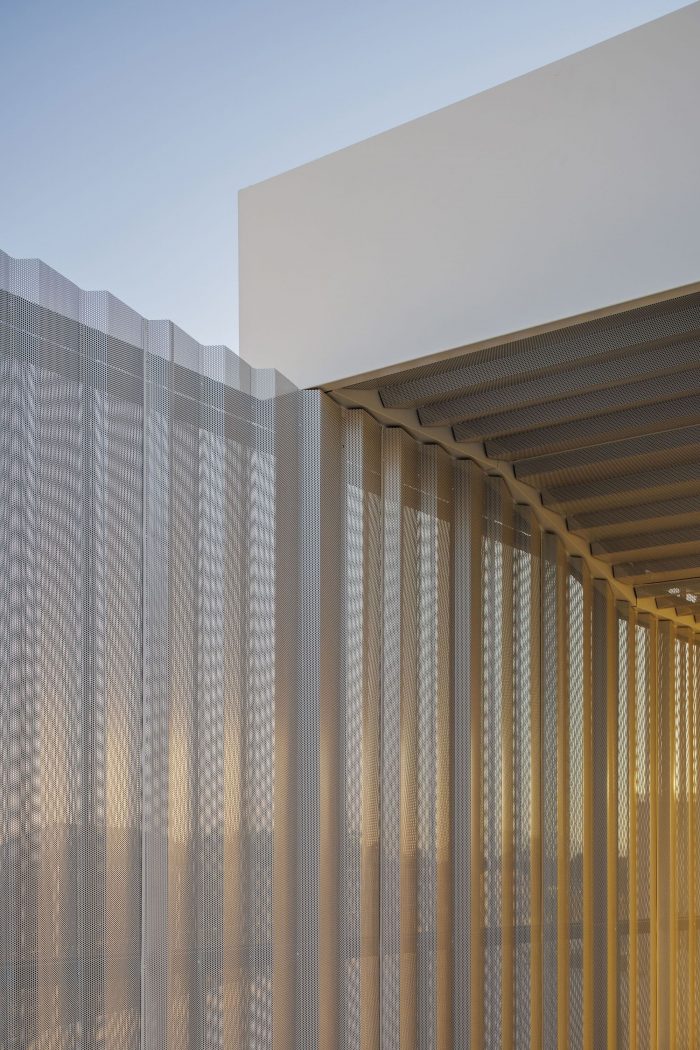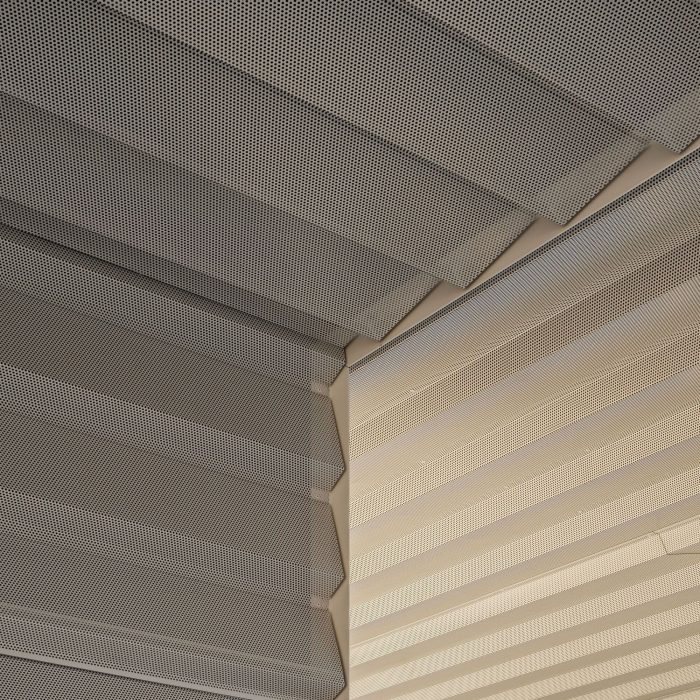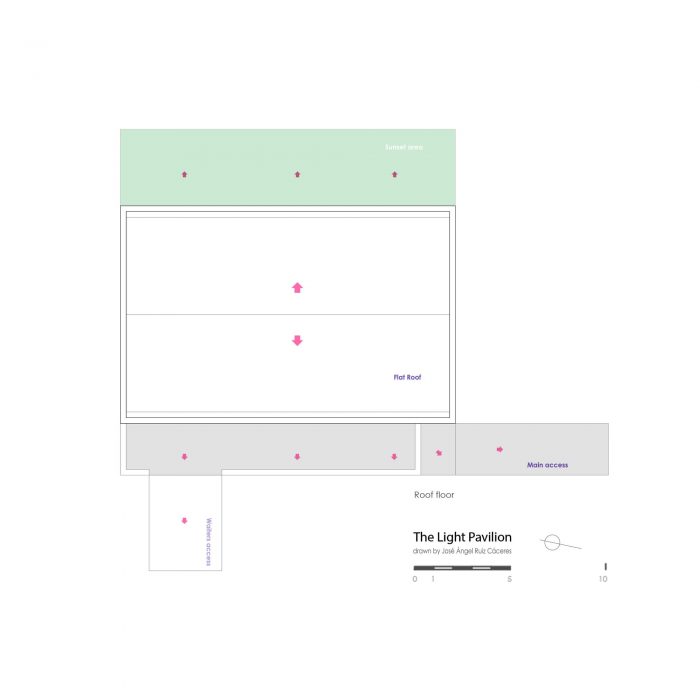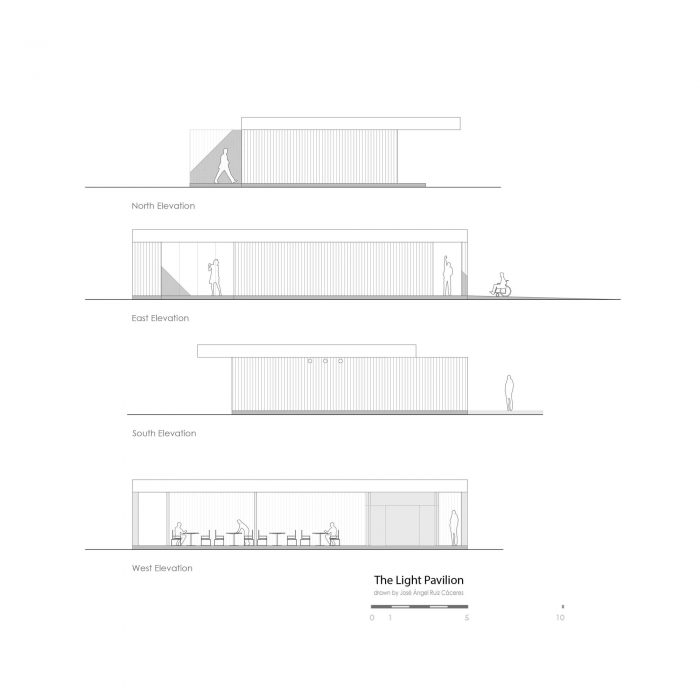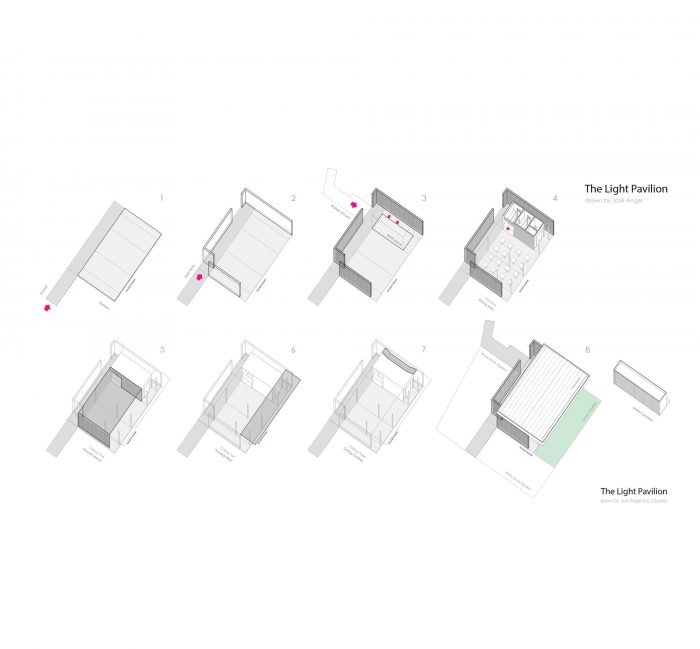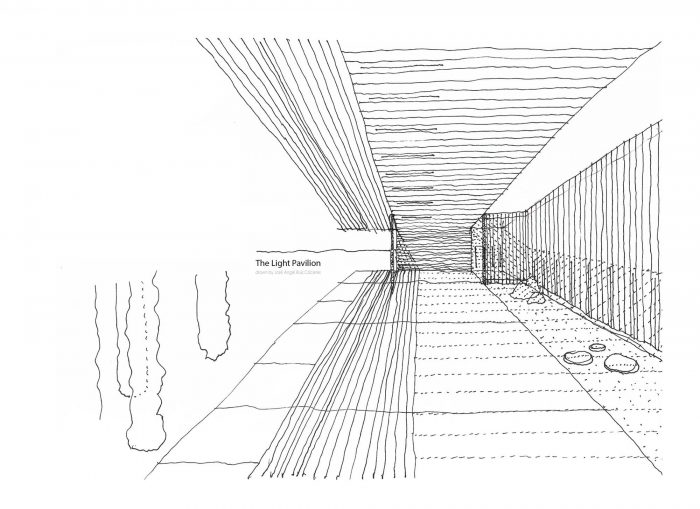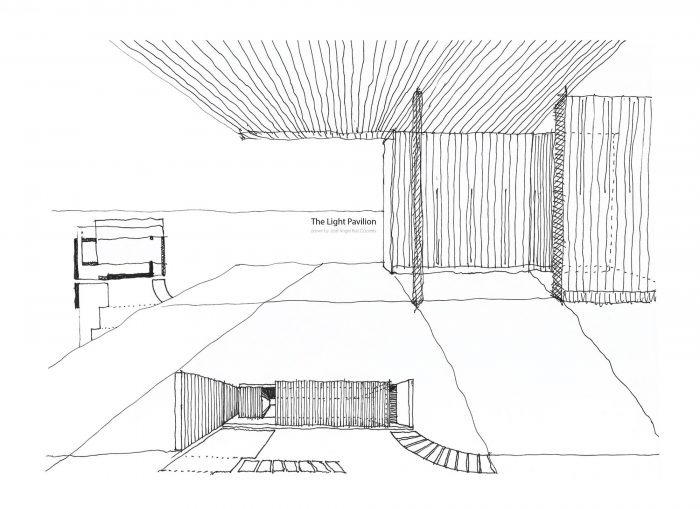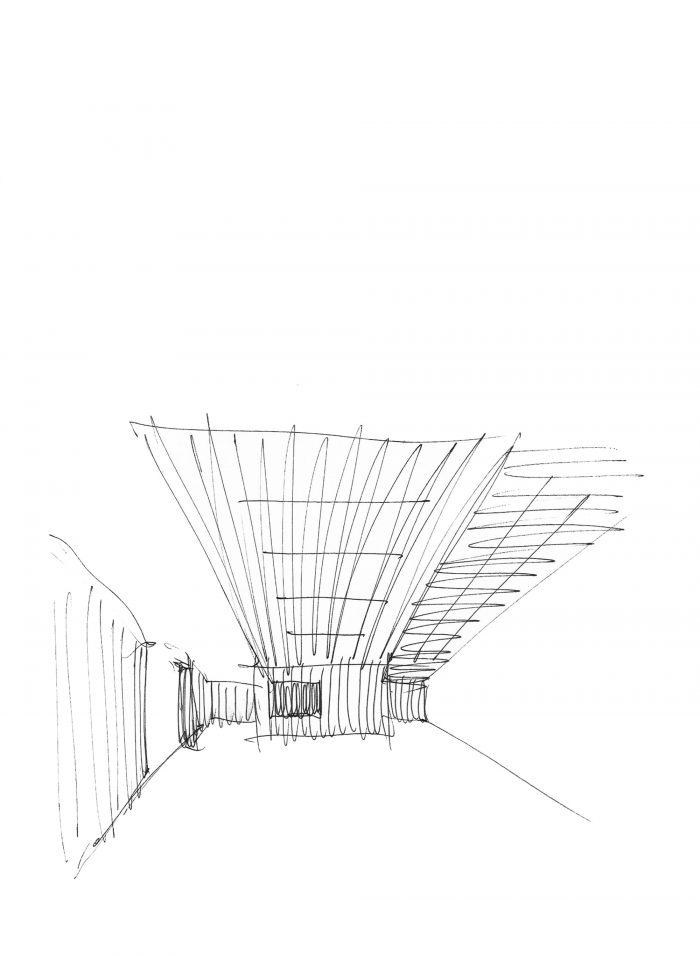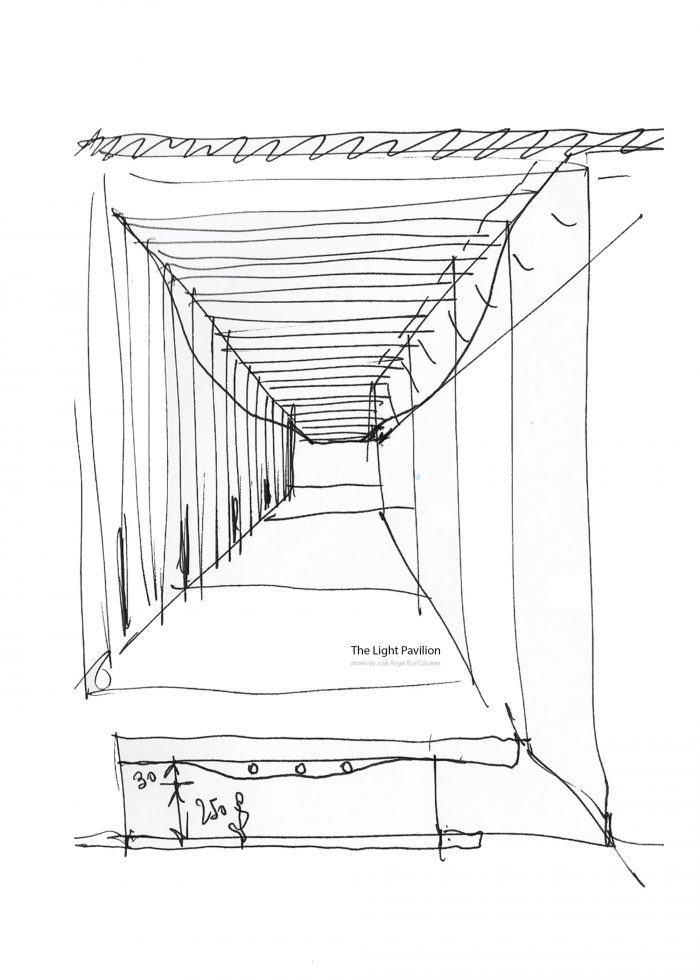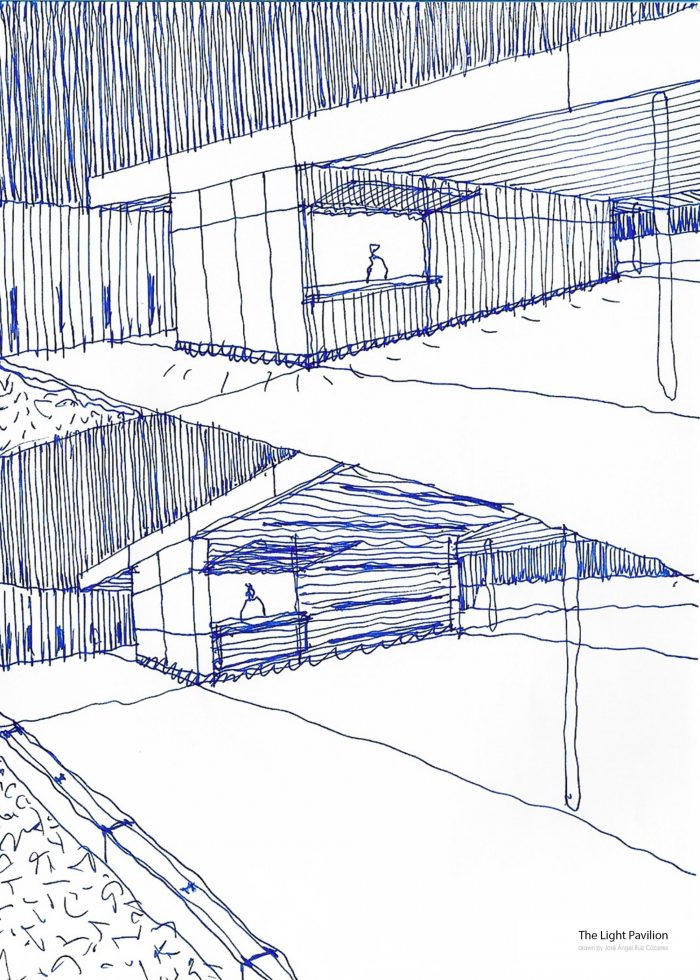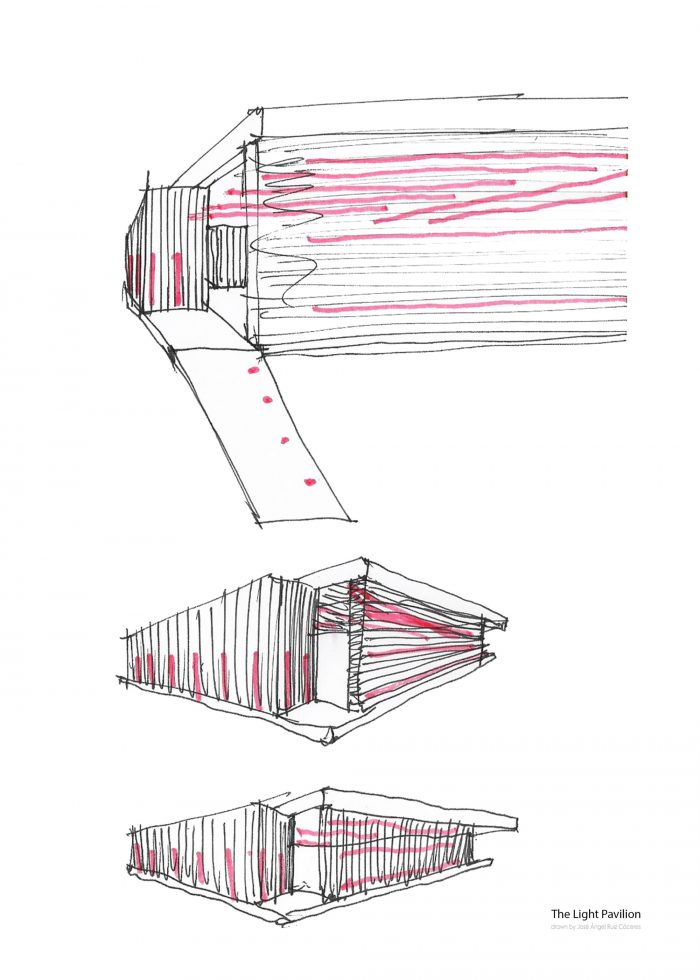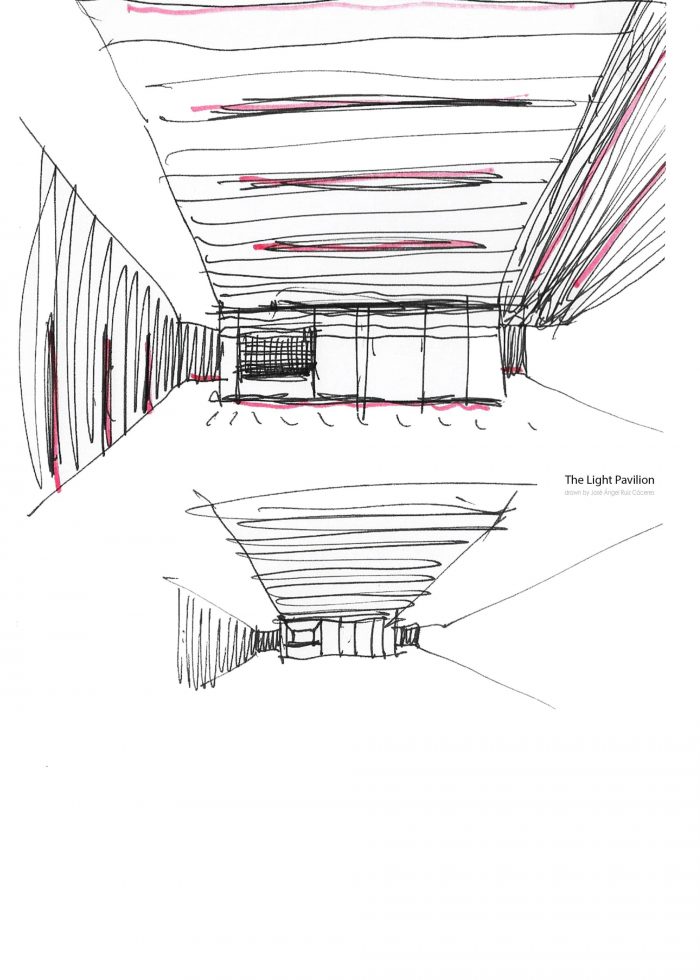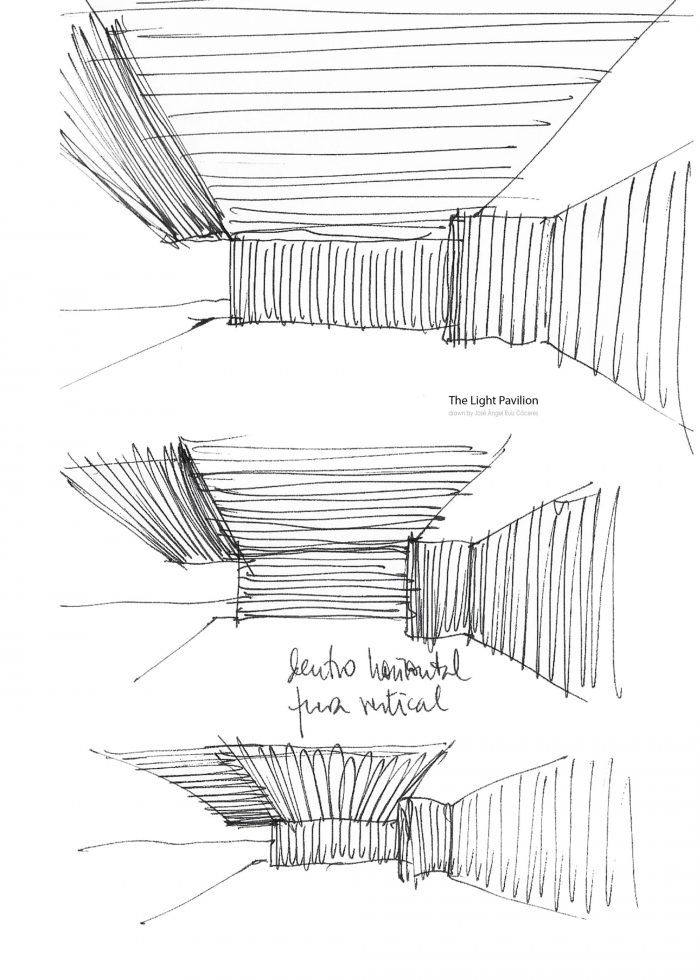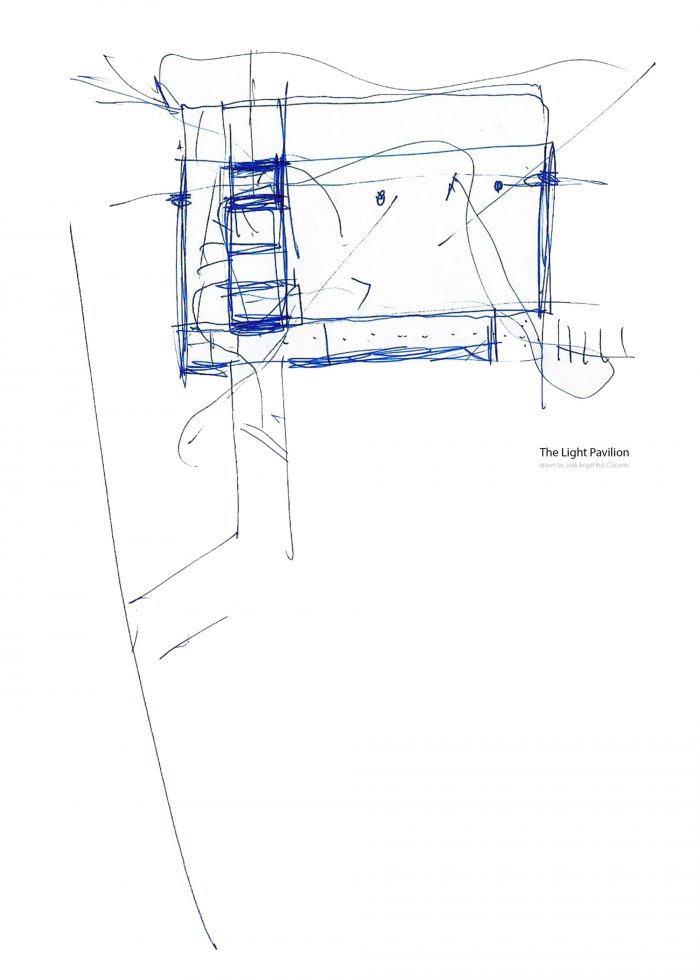光亭 “是一个概念性建筑,主要使用白色,提供一个纯粹的作品,当光线通过时,它改变了光线,并允许空气自由流动。它是一个小型建筑,作为亭子-餐厅露台提供,以便在一个美食邂逅的环境中实现新的空间体验,在这里,白天和晚上对光的感知是不同的,当人工照明通过建筑的皮肤刺激我们时,就像它是一个魔术一样。
‘The Light Pavilion’ is a conceptual construction that mainly works with white, offering a pure piece that transforms the Light as it passes through and allows the air to move freely. It is a small building that is offered as a Pavilion-Restaurant Terrace to enable new space experiences in an environment of culinary encounters, where Light is perceived differently during the day than at night when the artificial lighting thrills us –through the skin of the architecture– as if it were a magic trick.
这种限制帮助我们记住,开放的空间和通风,以及触摸感的重要性,对我们的生活体验至关重要。通过这个项目,建筑的视觉方面(开放的对角线,开放-封闭/室内-室外空间的相互依存)和触觉方面被重新强调,提供了 “内部感知的几何学”,建筑的皮肤纹理与用户的皮肤沿着物质的形式操纵进行对话。
The confinement helped us to remember that both open spaces and ventilation, as well as the importance of the sense of Touch, are essential to our life experiences. By means of this project, the visual aspects of architecture (open diagonals, interdependence of open-closed / indoor-outdoor spaces) and also its tactile aspects are re-emphasized, providing ‘geometries of interiority perception’ where the skin textures of the architecture dialogue with the skin of the users along the formal manipulation of matter.
光明馆利用外部和内部空间的联合流动性,提出了一个新的体验空间,其结构是通过一系列相互关联的空间事件,将人的尺度与周围环境的尺度以及气候和环境方面联系起来–太阳的角度(太阳入射)、自然通风、通过皮肤出汗、温度和湿度等。
The Light Pavilion operates with the joint fluidity of exterior and interior space, proposing a new experiential space that is structured by means of a sequence of interrelated spatial episodes that link the human scale with the scale of the surroundings and also with the climatic and environmental aspects of the place –the angle of the sun (solar incidence), natural ventilation, perspiration through the skin, temperature and humidity, etc.–
展馆的最终几何形状是通过将最小的基本建筑元素具体化而获得的,这些元素使得在这个特定的开放景观中发生的双重流动成为可能:第一,利用主要行人路线的布局,让从邻近停车场到达的用户进出;第二,在整个布局中,服务员从附属餐厅的厨房到展馆的工作空间的路线。
The final geometry of the Pavilion is obtained by materializing the minimum essential construction elements that make possible the double flow of movement that takes place in this specific open landscape: the first, using the layout of the main pedestrian route for the entry and exit of users arriving from the adjacent car park; the second, throughout the layout of the routes established by the waiters from the kitchen of the annexed restaurant to the workspaces of the Pavilion.
通常建筑的坚固和厚重的墙壁已经被转化为轻薄的皮肤,以一种过滤和微妙的方式透射光线和空气—就像它们是纺织元素一样–通过两个平行的白色金属片之间的叠加关系,通过折叠和穿孔来操作–通过一个黑色漆面的内部金属结构来分隔–就像我们的皮肤与笼罩我们的光线和空气一样。
The solid and heavy walls of the usual constructions have been transformed into light skins that transpire light and air in a filtered and subtle way –as if they were textile elements– through the relationship of superposition proposed between two parallel white metallic sheets that have been manipulated by folding and perforating –separated by means of an interior metallic structure lacquered in black–, in the same way, that our skin does with the light and air that envelop us.
Architects: Esculpir el Aire
Area : 2422 ft²
Year : 2022
Photographs :Alejandro Gómez Vives
Manufacturers : Levantina, Pladur, Simon, Hiansa, Jysk, Trondheim
Lead Architect : José Ángel Ruiz Cáceres
Structural Engineer : Juan Luis Castelló
3 D Collaborator : Felipe Pascual, Laura Blanco
Collaborator : Manuel Buitrago
Steel Structure : Estructuras Martínez Terrés
Ceramics : Gibeller
Lightning : Iluminia
Wood Carpentry : Martínez Lozoya Carpinteros
Crystals And Mirrors : Cristalería Rabasa
Landscaping : Viveros Ferpas
Topography : Eiffage
Soil Studies : Basalto Informes Geotécnicos
Program : Pabellón-Terraza Restaurante
City : Matola
Country : Spain

